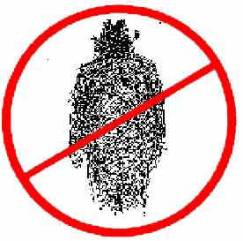
 sm
smCOLUMN NINETY-SIX, SEPTEMBER 1, 2003
(Copyright © 2003 The Blacklisted Journalist)
SECTION TEN

 sm
sm
COLUMN
NINETY-SIX,
SEPTEMBER 1, 2003
(Copyright © 2003 The Blacklisted Journalist)
NO
BLANK PAGES HERE:
WHAT
REALLY HAPPENS IN ISLAMIC SAUDI ARABIA

Don't errrrr! ROCK the boat in Saudi Arabia....
Subject: Stoning of Saudi woman
Date: Thu, 7 Aug 2003 16:32:36 -0500
From: "Hoffman, Alan, M. D." AHoffman@tmh.tmc.edu
[Editor's Note: When the Arabs attack Israelis with stones they call it NON-VIOLENCE. The media and most people agree. Read below and see just
how non-violent it is.]
When I was sent to Riyadh for a month to work with the US Air Force for a joint assignment, I never realized the sights I'd see. One of them was a
public stoning. All I saw was a woman standing in a hole tied to a post,
she was shoulder deep in the hole. The guy I was with wanted to see it. It's rare that westerners are even
allowed to see this They gathered around this poor girl for around an hour, throwing rocks at her.
Stoning
a human
to death
Dear readers, please put on your thinking cap and imagine a mental
picture of the following story.
A deep hole is dug in the ground. A 30-year-old lady, tied up from feet to shoulders, as a stick, is lowered alive into this hole, in a standing
position. Only her neck and head are visible. Can you imagine a human head
sticking above ground?
When the order is given, a man throws a fist-sized stone at her protruding head. The stone hits her head with a thud. She
screams in pain as the blood oozes down her face. Another man picks up a stone and scraps the
side of her head drawing a lateral line of blood. She cries and screams in excruciating
pain. Since it is a free-for- all, a teenage spectator from this open playing field, tries his luck, but misses her head completely. Another aims at
her and flings it with force. The stone hits its intended target, her forehead. She
screams and cries loudly for mercy. There is now a gash on her forehead.
Blood spurting out, down her eyes, nose, cheeks, mouth and down to the ground. She cries out for mercy but to not avail. The minutes become
an hour, between the many misses, scraps, nicks, chips and strikes. Another
spectator flings forcefully at her.
The stone hits the bridge of her nose with another thud. She screams again and again. This time the blood comes down from inside and outside
her nose. Probably, her nasal bridge-bone is broken, causing the bleeding
from inside her nostrils as well. Though her wounds are grave, as you can imagine, her
screams by now are not as vociferous as earlier, and her tears help to wash some of the blood on her cheeks. Her vision has
completely gone with the blood coating. The next stone hits her again. A piece of flesh pops
out. No, its not, oh God, it really can't be her eye-ball. It is so bloody that you
can't really make out. By this time, blood has covered her entire face and the ground in front of
her. She still makes groaning sounds
More time passes. Stoning her continues. Her sounds are less and less audible. Her
face has become unrecognizable. Flesh, like mashed meat is her face, but only more
bloody, as she now literally has no human face. Small strips of flesh, like locks of hair are hanging from her. Her head is now
drooping forward. At
this stage a hit on her make splashes of blood. She has stopped making a sound for the last two stone pelting. Two hours have passed. The
Islamic authorities check her neck for pulse. It is still beating but barely, due
to the loss of blood. A flesh piece drops off her head, as the stoning process continues.
Finally,death comes to this lady. She is then left there for a few more hours for the spectators to see, because this is a public lesson for all
Muslim females, who commit adultery. Then her father and relatives are allowed to dig her body, and bring it above ground. Pieces of her
flesh, lying on the ground, is collected and because she has no face, it is put back on the front of her head, and bundled up. Now readers, imagine
that is your mother, or your daughter, or sister, or even you, yourself.
DNA is not accepted in Islam, but at least 4 witnesses of reputable character, should give testimony of the actual penetration of the sexual
intercourse to convict the woman. You might ask, who has sexual intercourse in front of 4 witnesses? I can also ask you "how can you consider 4 men
watching others' sexual intercourse, as reputable characters?" But, there is
no question or denying that this is not a traditional, customary, cultural
or a kangaroo court, but a legal Islamic court, with legal Islamic judges and legal expert Islamic
officials. ##
* * *
THE FUGS: ANARCHO-SYNDICALIST OR SOCIAL DEMOCRATIC?
Subject: Fwd: fugs
Date: Tue, 15 Jul 2003 17:39:36 EDT
From: KhunRum@aol.com
To: info@blacklistedjournalist.com
Al,
I just got back from San Diego...California is a hell of a place. The mantra is: No work, look youthful and
pretty, marry well, get a good divorce settlement. Thought you might be interested in this piece
sent by a friend. Hope you are well.
Subject: fugs
Date: Tue, 15 Jul 2003 01:38:50 -0400
From: marc weisblott mweisblott@sympatico.ca
To: khunrum@aol.com
July 15, 2003
Rock 'n' Roll Dissidents, Fearless for 4 Decades
By BEN SISARIO
WOODSTOCK, N.Y. � Four decades ago Ed Sanders and Tuli Kupferberg founded the Fugs in an East Village bookstore on a bedrock of sex,
drugs, rock 'n' roll and poetry.
They sang raunchy encomiums like "Slum Goddess" and set Blake and Swinburne to a groovy beat at a time when "Leader of the Pack" and
"I Want to Hold Your Hand" were the cutting edge of pop. With the coming
of the Vietnam War they developed a confrontational, absurdist pacifism in songs like "Kill for
Peace" and became what many pop historians call the first underground rock band.
And though Mr. Sanders, who is 63, and Mr. Kupferberg, who turns 80 in September, have reached what one of their lyrics calls the
"time to think of ultimate things," they still sing about sex and peace and
poetry (though not about drugs so much anymore).
On July 8 they released their latest album, "The Fugs Final CD (Part 1)," on Artemis Records---"Never let yourself get painted into a
corner," Mr.Sanders said of the title---and on July 16 the Fugs will sing with their
band at the Village Underground on West Third Street in Greenwich Village, in what they say might be their last gig.
"If you're a rock 'n' roll band, they say if you can last five years, then it's forever," Mr. Sanders said in a recent joint
interview with Mr. Kupferberg. They were reclining in lawn chairs set beside a clear brook on
Mr. Sanders's three-acre wooded home here. As they spoke, a half-dozen deer came to peck at corn that Mr. Sanders and his wife,
Miriam, leave for them twice a day.
"William Butler Yeats, his career was 65 or 70 years long," said Mr. Sanders, who with his bushy hair and mustache and air of
gruff erudition resembles a hippie Mark Twain. "I'm one to believe that a career lasts 50,
60, 70 years."
"Or 80," Mr. Kupferberg said wryly. Mr. Sanders and Mr. Kupferberg have long balanced their
careers between rock 'n' roll and poetry. When the two met in 1962, peddling homemade magazines
outside an avant-garde movie theater on Avenue B, Mr. Kupferberg was nearing 40 and already an established poet and Lower East Side
mainstay. "I knew Tuli as a Beat hero," Mr. Sanders said. "He was in all the anthologies."
Mr. Kupferberg's magazine was called Birth. The title of Mr. Sanders's publication was a blunt profanity, with the more
descriptive subtitle "A Magazine of the Arts."
It was love at first mimeograph, and by late 1964 the pair had begun writing witty, crass and catchy rock tunes in Mr. Sanders's Peace
Eye Bookstore on East 10th Street.
They reveled in risquéopics, from the decidedly earthly qualities of "Supergirl" to the devious ways of "C.I.A. Man." ("Who has
got the secretest service/The one that's got the other service nervous?") Their concerts, at
the Bridge Theater on St. Marks Place and at innumerable benefits and peace rallies from Tompkins Square to Berkeley, Calif., were
chaotic in a way that jibed with the times. "It was the whole Happening movement," Mr. Sanders
said. "You could get a storefront and a couple of naked people and a tank full of Jell-O and call it art and charge admission."
Mr. Kupferberg responded, "We charged admission?"
As the Fugs' antiwar stance grew more extreme, and their songs became more outrageous---one, the pseudo-gospel satire "Wide, Wide
River," pictures a tide of excrement---the group came to embody a defiantly raucous side of the
peace movement.
"They were the anti-Joan Baez," said Happy Traum, a folk musician and former editor of Sing Out! magazine.
Today Mr. Kupferberg remains as much a living symbol of the bohemian lifestyle as ever. The author of "1001 Ways to Live
Without Working" and a new book of cartoons whose title promises a self-guided education in the sex
act, he still sells his poems and drawings on the street near his home in SoHo and remains spry from a vegetarian diet and
twice-daily walks up five flights of stairs. He also refuses to see his poetry and
lyrics as mere provocation.
"The goal is not to shock people but to change their attitude," he said. "I don't think there's anything people shouldn't say unless
they're directly urging people to do harm to each other. Shocking people is stupid and
infantile. That turns people against you."
Mr. Kupferberg has always operated just outside the bounds of propriety---he suggested the band's name, taken from Norman Mailer's
copulatory euphemism in "The Naked and the Dead"---and on "The Fugs Final CD"
his talent remains poignantly intact.
In "Septuagenarian in Love" he rewrites the 1959 hit by Dion and the Belmonts, "A Teenager in Love," as a bitter complaint
about sexual dysfunction in the twilight years, with graphic illustrations and a crying
chorus: "Each night I ask Venus up above/Why must I be a septuagenarian in love?"
The Fugs included a rotating cast of poets and musicians with Mr. Sanders and Mr. Kupferberg at the core. The group made six albums
and had more than 700 performances at the Players Theater on Macdougal
Street in Greenwich Village, and Mr. Sanders made the cover of Life magazine in 1967 before the
band broke up in 1969.
In 1971 Mr. Sanders wrote "The Family," an investigative book about Charles Manson and his cult that has become a true-crime classic
and has sold more than a million copies. He also began writing what he calls
investigative poetry, completing "1968: A History in Verse," two volumes of his projected
nine-part series "America: A History in Verse," and four volumes of "Tales of Beatnik Glory."
On his grounds in Woodstock, Mr. Sanders houses a countercultural archive that fills his garage to the ceiling. He has voluminous
files on Abbie Hoffman, Allen Ginsberg and of course Mr. Manson.
"Final CD" is the Fugs' first album of new material since 1987. The inspiration for the revival, Mr. Sanders said, was the
terrorist attacks of Sept. 11, 2001; Mr. Kupferberg had watched in horror from his apartment
window as the World Trade Center was destroyed.
The attacks awakened feelings of political outrage and set Mr. Sanders and Mr. Kupferberg to writing a pile of new songs. As it was
in the 60's, the Fugs' approach to protest music is a combination of juvenile antics, black
humor, sweet hopefulness and pointed satire.
"Go Down, Congress" accuses the Bush administration of having ties to terrorists in the Middle East and
argues for that claim in a printed insert that comes with the CD.
Mr. Sanders and Mr. Kupferberg are both radical utopianists, but from different perspectives. Mr. Kupferberg's "Short History of
the Human Race," for example, is just six lines, ending with:
World War I: The human race stinks
World War II: The human race shrinks
World War III: The human race extincts.
"Tuli's more anarcho-syndicalist," Mr. Sanders said, "and I'm more social democratic."
Mr. Kupferberg said: "We're both looking for the path that will take us closer to where we want to go. Marx was quite good at
analyzing what was wrong with capitalist society, but he was wrong in formulating the approach
to his utopia. The anarchists have the right idea, but they don't know how to get there."
Mr. Sanders insists that rock music remains a viable method for political dissent. And the catchier the tune---
and the raunchier the lyrics---the better.
"Rock 'n' roll can be incredibly dappled with dissent," he said. "It's a mnemonic art form, in the sense that people can remember
the messages in both parts of the brain. There are eros and lust and mating associated with
certain vowels and certain forms of singing, so there's a kind of lusty, dissent-dappled fabric to rock 'n' roll."
Mr. Kupferberg, who joined a Communist youth group called National Student League while in high school in the 1930's, has learned to
avoid what he calls the "big utopias." Instead he expresses his aims in
the song "Advice From the Fugs."
"Pursue the small utopias," it goes. "Nature, music, friendship, intimate love."
"We sing it in a round," Mr. Sanders said. ##
* * *
STINKER?
Subject: stinker?
Date: Wed, 30 Jul 2003 01:02:14 EDT
From: KhunRum@aol.com
To: info@blacklistedjournalist.com
Don't Look Twice
Critics mostly loathe Bob Dylan's new film.
By Marshall?eyman
Updated Friday, July 25, 2003, at 1:05 PM PT
Masked and Anonymous (Sony Pictures Classics). "A strong contender for the worst movie of the century," moans the New York Post's Lou Lumenick; most
critics find this Bob Dylan "vanity project" as incomprehensible as his "rambling,
stream-of-conscious liner notes." A cockamamie political allegory in which
America's government has been taken over "by corrupt Latinos" and its TV network by "black thugs," the whole thing "makes about as much sense as
someone else's acid trip." But the film contains "enough lyric references to keep
Dylanologists freeze-framing for years," and A.O. Scott finds Masked, "perhaps morbidly, fascinating" as a Dylan tribute and "artifact." Only Salon's Stephanie
Zacharek is bold enough to give this "giant in-joke" a bona-fide rave. It's kind of
like a "long, messy Bob Dylan song—or, more specifically, a dream version of a
Bob Dylan song that folds in just about every motif he's ever written about." (Buy
tickets to Masked and Anonymous.) ##
* * *
ABOUT A MASKED AND ANONYMOUS DYLAN
Subject: brutal~dylan movie
Date: Wed, 30 Jul 2003 01:26:08 EDT
From: KhunRum@aol.com
To: info@blacklistedjournalist.com
Thursday, July 24, 2003
BY STEPHEN WHITTY
Star-Ledger Staff
How does it feel? To be on your own? With no direction home? Like a complete unknown?
Well, probably a heckuva lot better than to be sitting through "Masked & Anonymous" for the second time.
Bob Dylan's latest mad vanity project premiered at the Sundance Film Festival six months ago and left its audience stunned, stumbling
outside like the survivors of a disaster. Which in a way, of course, they were.
Now, trimmed of about five minutes, it's back. And the idiot wind of its story blows just as proudly as before, full of the sort of half-baked
pontifications that Dylan fans learned to bear long ago.
They have practice, of course. (Ever try to read "Tarantula"?) And as directed by Larry Charles of the old "Seinfeld" show, "Masked &
Anonymous" is indeed a disaster of nearly "Renaldo and Clara" proportions -- though, thankfully, at less than half the length.
The chief difference is that now Dylan's dragged along a dozen Hollywood stars for the ride, from Jeff Bridges to Christian Slater --
and this time nobody's hiding behind pancake makeup.
The story -- credited to "Rene Fontaine" and "Sergei Petrov," but really written by Dylan and Charles -- makes about as much sense
as someone else's acid trip. Sometime in the near future, America has been taken over by a Latin-American junta. The presidential
palace has been painted in the Mexican national colors, and a
perpetual war rages to the south.
In debt to loan sharks, the sleazy agent Uncle Sweetheart schemes to mount a fake charity concert on television, and skim the proceeds.
His headliner: The long imprisoned music star Jack Fate. But before
that simple twist of plot can unwind, investigative reporter Tom Friend gets on the case, and heads to the TV studio, where he
encounters ... .
Oh, what's the use.
Very little in "Masked & Anonymous" aspires to reality -- characters have names like Bobby Cupid and Pagan Lace -- and what does
make sense is offensive. America's government taken over by corrupt Latinos, its TV network run by black thugs -- exactly when did
Bob Dylan turn into a nervous old white man? When precisely did he decide to let the times go on a-changing without him?
The charitable may point out that Dylan has always been open to misinterpretation -- in fact, he's even seemed to encourage it. Yet it's
difficult to misinterpret this reactionary screed, and it's a strange message to hear from someone who once made pilgrimages to
Woody Guthrie's bedside.
At one point -- somewhere before the ghostly appearance of Ed Harris as an old blackface entertainer, but long after Bridges has
explained AIDS as the work of "the Mau-Mau" -- the veteran folkie even performs a rousing "Dixie." Forty years ago, those lyrics would
have been spat out with bitter irony. Now, alarmingly, they seem heartfelt.
Following happily in Mr. Tambourine Man's bootheels are too many people who should know better. In addition to Pen謯pe Cruz, looking
lost and playing an addled "half-breed," and Bridges, playing a reporter so unbelievable he has Bruce Dern for an editor, the cast is
an around-the-world-in-a-daze collection of stars, from John Goodman (as Sweetheart) to Jessica Lange (as a TV producer).
Nobody escapes unscathed.
Occasionally, when Dylan stops pushing his half-baked ideas long enough to play some music, the movie stirs to fitful life. (The
soundtrack features some great cover versions of his classics, as well.) Mostly, though, guest stars like Val Kilmer and Mickey Rourke
simply declaim endless, senseless monologues while Dylan just
stands there, glumly looking on in his Roy Rogers cowboy suit.
Dylan has given fans a lot of brilliant music over the years, and a lot of different Dylans, too: the folkie, the rocker, the recluse, the
born-again Christian, the traditionalist Jew, the incomprehensible icon. Most of these personae have stuck around for a tour or two only
to be, thankfully, forgotten by everyone, and replaced by something else.
But this latest incarnation can't be ignored, and this movie deserves to be abhorred. Less the product of a'60s icon than a sixtyish crank,
it tediously commutes between anger and inanity -- and whatever answers it pretends to offer aren't blowing in the wind, but merely
carried along by a lot of hot air.
Rating note: The film contains violence and strong language. ##
* * *
LOOK WHO'S THROWING STONES!
Subject: Fwd: People in Glass Houses........
Date: Fri, 1 Aug 2003 22:38:06 EDT
From: MERRILLFLA@aol.com
From: KhunRum@aol.com
To: info@blacklistedjournalist.com

CLICK HERE TO GET TO INDEX OF COLUMN NINETY-SIX

CLICK HERE TO GET TO INDEX
OF COLUMNS
The
Blacklisted Journalist can be contacted at P.O.Box 964, Elizabeth, NJ 07208-0964
The Blacklisted Journalist's E-Mail Address:
info@blacklistedjournalist.com
![]()
THE BLACKLISTED JOURNALIST IS A SERVICE MARK OF AL ARONOWITZ